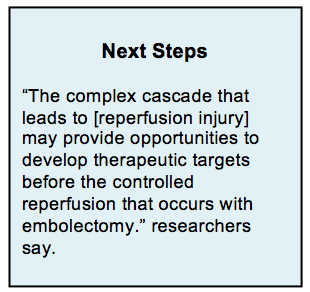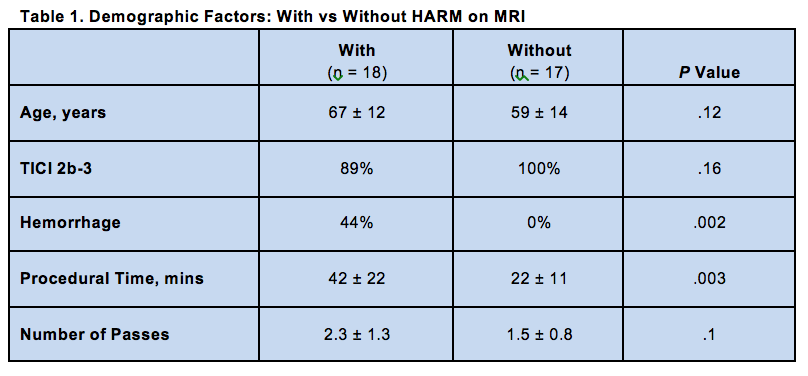Key Points:
- Study examines looks at presence of HARM on MRI after mechanical thrombectomy for acute ischemic stroke
- HARM independently associated with poorer neurological recovery at 24 hours
Patients with acute ischemic stroke who show a finding on MRI known as hyperintense acute reperfusion marker (HARM) after mechanical thrombectomy tend to have poorer neurological recovery at 24 hours, according to new data published online June 29, 2016 ahead of print in the Journal of NeuroInterventional Surgery.

This link, researchers say, may help elucidate the biochemical processes behind reperfusion injury, helping to identify potential targets for therapeutic prevention.
“HARM MRI demonstrates a hyperintense signal in the subarachnoid space on fluid-attenuated inversion recovery (FLAIR) imaging after gadolinium administration,” write the authors. “The presence of gadolinium in the subarachnoid space has been linked to disruption of the blood-brain barrier and has been shown to occur in patients with a transient ischemic attack without the presence of diffusion-weighted infarction and carotid stenting procedures.”
Rishi Gupta, MD, of Kennestone Hospital (Marietta, GA), and colleagues retrospectively reviewed 35 consecutive patients who underwent MRI to detect HARM following mechanical thrombectomy of anterior circulation large vessel occlusions over a 2-month period in 2016.
Patients’ mean age was 64 years, and their median NIHSS score was 15 (IQR 9-20). Overall, 18 (51%) were found to have a HARM-positive MRI. Univariate analysis showed nonsignificant trends suggesting that patients with HARM tended to be older, have a lower reperfusion rates, and undergo procedures requiring more passes with a stent retriever. HARM-positive patients had longer procedural times and were more likely to experience hemorrhage (table 1).

Binary logistic regression modeling revealed that the absence of HARM and higher admission National Institutes of Health Stroke Scale (NIHSS) score independently predicted good neurological recovery, defined as an increase in NIHSS score of at least 8 points at 24 hours (table 2).

New Targets for Future Therapies
According to the researchers, their study is the first to link HARM and worse outcomes specifically in a population of patients undergoing thrombectomy.
“The presence of HARM on MRI probably represents a component of reperfusion injury due to the breakdown of the blood-brain barrier,” Gupta et al write. “Reperfusion leads to oxidative stress due to an increase in reactive oxidative stress and decline in antioxidants. The reactive oxidative species break down the fatty acids of the phospholipid membranes, which leads to a breakdown of the blood-brain barrier.”
They suggest that the complex cascade involved in reperfusion injury may offer opportunities for the development of therapeutic targets in the future to prevent such damage.
Source:
Gupta R, Sun CJ, Rochestie D, et al. Presence of the hyperintense acute reperfusion marker on MRI after mechanical thrombectomy for large vessel occlusion is associated with worse early neurological recovery. J NeuroInterv Surg. 2016;Epub ahead of print.
Disclosures:
Dr. Gupta reports being a consultant to Stryker Neurovascular, Covidien, and Rapid Medical, receiving research funding/grant support from Penumbra, Stryker Neurovascular, and Medtronic, being associate editor of the Journal of Neuroimaging, Journal of NeuroInterventional Surgery, and Interventional Neurology, and receiving royalties from UpToDate.

